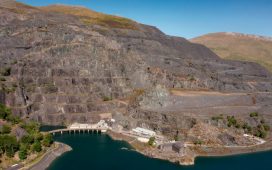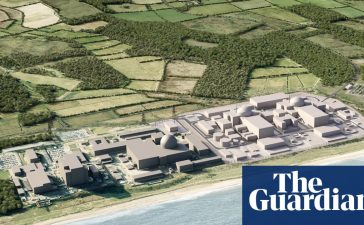Receive free UK infrastructure updates
We’ll send you a myFT Daily Digest email rounding up the latest UK infrastructure news every morning.
The one piece of infrastructure that is absolutely critical to the UK’s net zero ambitions is the electricity grid. Yet the process through which it is designed, approved and built is astonishingly circuitous. While there was much to dislike in prime minister Rishi Sunak’s net zero U-turn last week, new commitments to reform the network should be welcomed.
Sunak’s approach is three-pronged. He wants to reform the way the grid is designed and to streamline planning consent. He also wants to cut the 14-year waiting list for generators to connect to the network. These are helpful ideas. Implementing them, however, will require steely determination against the inevitable opposition.
The problem is clear. As a report published last month by the government’s electricity networks commissioner, Nick Winser, points out, developing the UK power grid is a complex and fragmented process. It starts with transmission owners such as National Grid identifying needs and drawing up a list of projects that might meet them. The regulator approves projects whose expected benefits outweigh investment costs.
That is when the planning nightmare starts. Each application is presented to individuals, communities, the Planning Inspectorate, local authorities and national governments. The process is lengthy and unpredictable. Projects that succeed then order scarce materials such as high-voltage direct current (HVDC) cables, and try to get lines built, despite a chronic shortage of engineers.
As a result, it takes 12 to 14 years to build strategic transmission infrastructure. Meanwhile, wind farms take less than half the time to complete. The connection process is snarled up too. With almost 300GW of renewables projects stuck in a queue, projects applying now for a date to connect to the electricity network are told to wait beyond 2035.
Slow grid investment is already constraining wind power availability. Today, we have 11GW of wind capacity in Scotland — set to rise to 15GW by 2025 — and only 7GW of capacity to bring power from Scotland to England, says Ashutosh Padelkar at Aurora Energy Research. Such bottlenecks have cost bill payers almost £2bn since 2022. That is because we collectively pay for wind farms not to produce if they cannot shift electricity. We also have to fork out to get another generator, nearer demand, to start up.
This is only going to get worse, given the size of the investments needed to electrify the UK economy. “The grid is not correctly sized, or even in the right place for net zero” says Tom Edwards of Cornwall Insights, an energy research firm. Electricity use in the UK is expected to roughly double from the current 300TWh, according to National Grid scenarios. Peak demand will rise faster. Add everything together and the UK might need to invest £200bn in its network by 2050.
Quite clearly, we are in no way equipped to deliver this revamp in time. Enter Sunak’s commitment to present a “Spatial Plan”, one of the recommendations in the Winser report. It appears to be an exercise in which the system operator — a function that is being carved out of National Grid — pencils in where it expects demand to be, where it expects supply to be, and connects the dots with infrastructure that it reckons needs to be built.
A long-term centralised plan has a lot of advantages over the current incremental ad hoc approach. For one thing, it enables co-ordination between the grid, the Crown Estate leasing seabeds for wind auctions, and operators looking at complementary solutions such as hydrogen or carbon capture.
Moreover, this kind of planning should speed up the delivery of individual power lines. The hope is that if a broad blueprint were approved by politicians and regulators and explained to local communities, its constituent projects might get less bogged down. Big schemes might even be treated as strategic national infrastructure and benefit from a streamlined authorisation process.
With an approved strategic plan, the grid might even be able to adopt a “build it and they will come” approach, investing before demand materialises. That is risky, of course. But it is a risk we should be prepared to take. In the past, the regulator’s focus has been about minimising regrettable investment. Now, it should be about trying to break through the gridlock.











